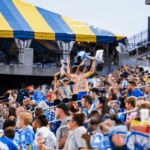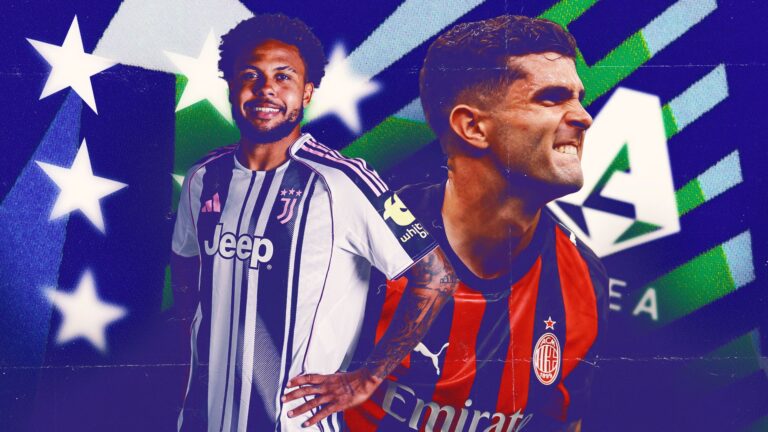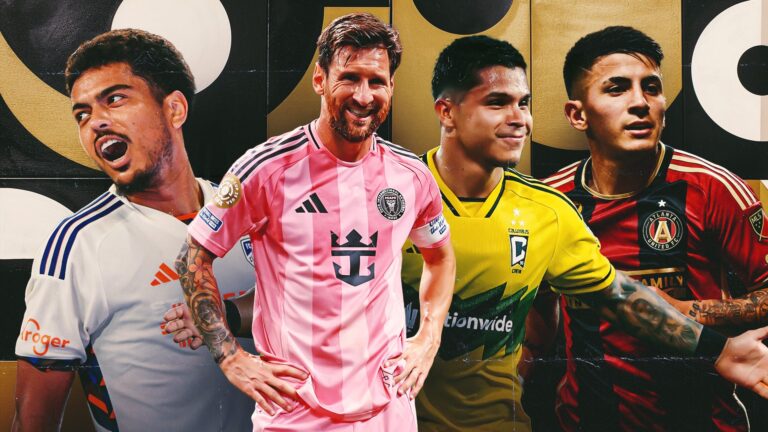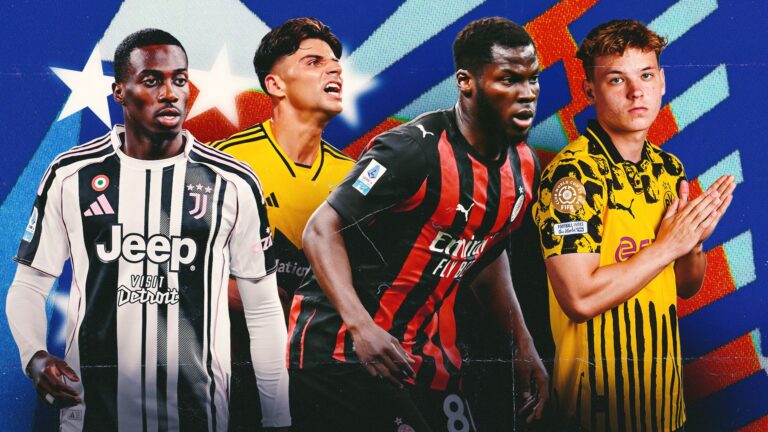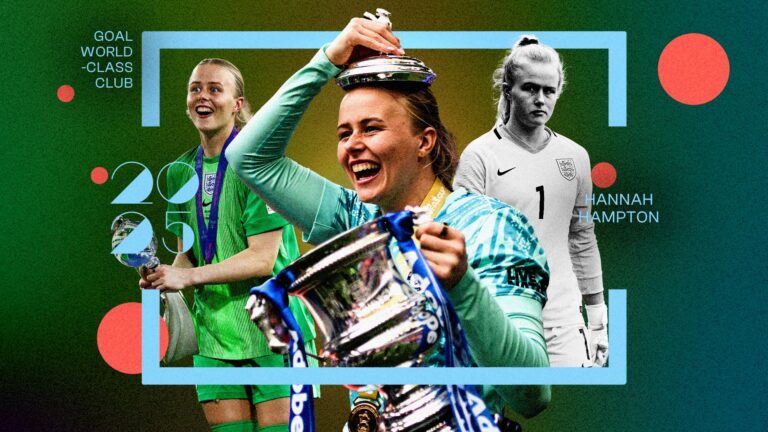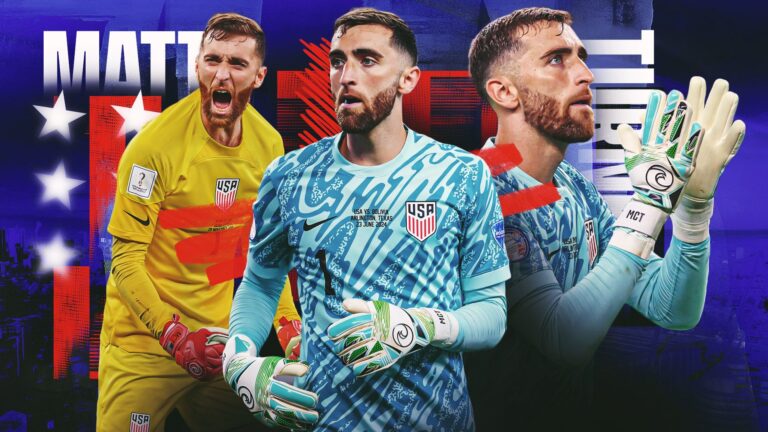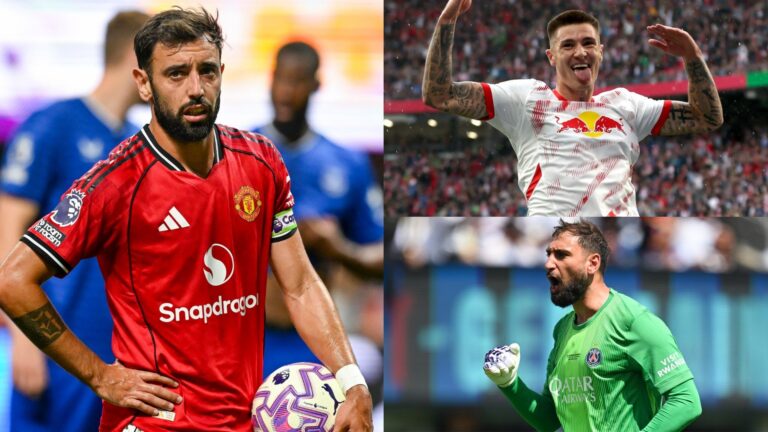For most soccer clubs, the season ends with some kind of festivity. ريال بيتيس, famously, throw stuffed animals onto the pitch. Fans across England stay behind to sing. In Argentina, that pre-match asado might last just a little bit longer.
In Annapolis, Maryland, they throw water balloons at each other.
Before the final fixture of the season, Annapolis Blues fans showed up to toss burstable balloons at each other in the parking lot of Navy-Marine Corps Memorial Stadium on the edge of the Chesapeake Bay. Absurd? Perhaps. Silly? Almost definitely. But for the Blues, its tradition, the third season in a row of what has now become the annual water balloon fight to mark the final day of the USL الدوري الثاني حملة.
The Blues are semi-professional. They play fourth division soccer in the United States at a field that doesn’t belong to them. But they also boast attendance that eclipses some USL Championship sides. This is a tiny club that has the atmosphere, following and vibe of a massive one.
It is also deeply embedded in the community of Maryland’s state capital, the humble side project turned main event of a number of vets of the area, who have headed back to something resembling their roots to flesh out the ultimate proof of concept of what lower league U.S. soccer can be at its very best.
"Annapolis happens to be a soccer savvy, really great community," owner Michael "Hitch" Hitchcock, told بالجم. "And I think when you take the right approach and you execute the playbook, if you will, great communities respond, and that’s what we’re seeing."






For most soccer clubs, the season ends with some kind of festivity. Real Betis, famously, throw stuffed animals onto the pitch. Fans across England stay behind to sing. In Argentina, that pre-match asado might last just a little bit longer.
In Annapolis, Maryland, they throw water balloons at each other.
Before the final fixture of the season, Annapolis Blues fans showed up to toss burstable balloons at each other in the parking lot of Navy-Marine Corps Memorial Stadium on the edge of the Chesapeake Bay. Absurd? Perhaps. Silly? Almost definitely. But for the Blues, its tradition, the third season in a row of what has now become the annual water balloon fight to mark the final day of the USL League Two campaign.
The Blues are semi-professional. They play fourth division soccer in the United States at a field that doesn’t belong to them. But they also boast attendance that eclipses some بطولة USL sides. This is a tiny club that has the atmosphere, following and vibe of a massive one.
It is also deeply embedded in the community of Maryland’s state capital, the humble side project turned main event of a number of vets of the area, who have headed back to something resembling their roots to flesh out the ultimate proof of concept of what lower league U.S. soccer can be at its very best.
“Annapolis happens to be a soccer savvy, really great community,” owner Michael “Hitch” Hitchcock, told بالجم. “And I think when you take the right approach and you execute the playbook, if you will, great communities respond, and that’s what we’re seeing.”
فريد Matthes was all-but retired when he found out about Annapolis Blues. He had served his time at the highest levels of professional soccer that the U.S. has to offer. His resume, in fact, is glittering, complete with front office positions and operations gigs pretty much everywhere: the 1994 كأس العالم, the 1996 Olympics, MLS Playoffs, MLS Cups, two women’s World Cups and a long tenure at D.C. United – to name a few.
By the start of the 2020s, he was in a “semi-retired state'” and doing consulting, helping soccer get started here and there. He reached out to Hitchcock almost out of boredom. An MLS vet in his own right – with behind-the-scenes stints at Colorado Rapids, LA Galaxy and نادي دالاس لكرة القدم – his time in the top flight had also come to an end.
Hitchcock was the owner of Playbook Management International, a company that helps lower league soccer teams get off the ground. His clientele is impressive, with involvement in NPSL teams around the country. He was brought aboard to help establish the Annapolis side in 2021.
“As the owner of the club, I feel like I’m the caretaker,” he says. “I’m the crazy guy who’s willing to take the risk and put the money in to get it started. This is the community’s club that, you know, if it works, I look like a visionary, not crazy – and it will live beyond me. And so we always take the approach that we want this to be transformational for the sport of soccer in whatever community that we’re investing in.”
Matthes simply sent a hello and casually mentioned that he would be willing to help out.
“I reached out to him. I said, ‘Look, I’m close by. I live about an hour and a half away, over in Northern Virginia from Annapolis.’ I said, ‘Anything you need help with, just give me a holler. I’m kind of in between teams down. I’ve been doing this consulting thing, kind of almost in a semi-retired state.’,” Matthes told BALLGM.
The two had a few conversations, and Matthes started to chip in. And then, the real offer came in.
“Hitch goes, ‘What I really need is a general manager’,” Matthes said.
Matthes was reluctant. He was well beyond the days of a full-time soccer role. But Hitch convinced him, on the condition that he wouldn’t be on board for more than a year. Three years later, Matthes is showing no signs of slowing down.
It helped, of course, that the team had assembled a real collegiality among investors. Former USMNT player Kyle Beckerman is among them, while a collective of local small business owners, broadcasters and entrepreneurs have all invested. It is a remarkable, hyper-local group – all of which were either born, raised, or spent a significant portion of their lives in the area.
The first question for startup soccer clubs is simply, why? There is never a singular reason that a certain area needs a team. Clubs pop up all over the U.S. at an accelerated rate, penetrating small markets nationwide. That is the byproduct of the growing soccer ثقافة in the country – there are hundreds of cities to which the gospel can be spread.
As for Annapolis, the reason, in the owners’ minds, was simple – there was no one else.
“There’s never been a team in any sport or club that’s called itself Annapolis,” Matthes said. “You have the Naval Academy, obviously that’s in Annapolis. But you know the lacrosse teams, the Bayhawks, the baseball teams around the area are the Bay Sox… everybody that’s ever played in Annapolis in all these other sports has always gone by a different name. And we said ‘Why not make it Annapolis? Let’s make it about Annapolis. Annapolis is a cool place.’ “
It always figured to be difficult. With no professional teams, there wasn’t an established sporting culture in the town. But there were some sporting touchpoints. Proximity to Baltimore and Washington D.C., both sports strongholds, certainly helped, as did the fact that Annapolis has always embraced soccer.
“You draw from D.C., you draw from Baltimore. Anybody in Baltimore that wants to see some level of semi or professional soccer, rather than trying to come into DC and figure out parking or metro or anything like that, you just kind of veer out and you go and you park in this big lot, and it’s cheaper,” Brendan Hartlove, the Blues’ broadcaster who was raised in nearby Howard County, told BALLGM.
At first, Matthes and Hitch were unsure about the buy-in from the community. Yes, there was Annapolis pride. But with no proof of concept outside of Navy college sports, their expectations were tempered. But there were early signs that the fans would care. They left the team name up to a public vote, allowing fans to choose between four options and crests. More 1,200 votes were cast – and Blues came out the winner.
Still, anxieties remained. Annapolis was set to play their home matches at Navy-Marine Corps Memorial Stadium, a cavernous 37,000-seater field that usually hosts college football games. Fan attendance was largely an unknown. But then, the community started to listen.
“We were expecting maybe 3000 or 4000 when we started out, but we just kept selling more season tickets and more season ticket – and people started asking about when’s the schedule coming out, when’s the first game?” Matthes said.
By the time the home opener on June 3, 2023, the Blues front office was looking up NPSL attendance records. Information was scarce, and the team didn’t exactly have a fleshed-out operations staff. The best they could find was Detroit City, now in the USL Championship, who had drawn out more than 7,000 to their opening game. That, they thought, was just about within reach.
Their attendance exceeded all expectations, with 8,368 fans at the debut. If Matthes and Hitch were surprised, Dave Johnson – a minority owner who has voiced D.C. United’s radio and TV broadcasts since 1996 – wasn’t.
“This is your summertime party for your community,” he explained.
Fan support has only grown, with 8,840 watching the Blues beat the Alexandria Reds on penalties in the Mid-Atlantic conference final on July 15, 2023. For the home opener the following year, 11,171 showed up. By the end of that campaign, the Blues held the top eight attendance marks in NPSL history, and 10 of the top 11. The scale and interest grew far bigger than any of them could have imagined.
But it was also a hyper-targeted effort. Annapolis is not a major metropolitan area. It has expansive suburbs and a recognizable downtown, as well as a fine history. It was briefly the nation’s capital. Walk around the cobblestoned streets of Annapolis proper, and it really does feel genuinely colonial. It is historic, charming.
The backbone of the local economy is the small businesses: coffee shops, breweries, restaurants, art and music galleries, independent stores. This is not a place with a massive corporate footprint or billionaire sponsors.
The owners realized that early on, and made their efforts people-facing. They got out into the local community to spread the word, and partnered with targeted small businesses. They worked with youth soccer clubs and nearby charities. Even the team logo – the iconic Annapolis blue crab – is a carefully curated homage to the area.
“With successful clubs, there’s a lot of groundwork that goes into it,” Hitch said. “A lot of work went in early on identifying key influencers in the market, those important stakeholders, and getting buy in over cups of coffee and great local beer. And making sure that a lot of people in the community want this to be successful.”
Johnson, given his local hero status, was also something of a pull.
“I’ve been so heartened by people who have come up to me either sponsors or ticket buyers and say ‘Well if you were involved, it had to be good.’ I’m not bragging about that, but to me, that is a validation or vindication, whatever word you want to use,” he said.
Of course, there’s football to be played. The NPSL wasn’t a massive draw as a league. Matthes brought in Colin Herriot, a اسكتلندا Native who has coached in the area since 2013, and gave him free rein to recruit as he saw fit.
“We don’t really have the budget to go out and recruit players from all over the country or even all over the East Coast or whatever. We want to focus on the local marketplace so that they have a place to live when they’re here during the summer months,” Matthes added.
And that made sense. The DMV – D.C., Maryland, Virginia – as it is locally known, is a fine area for youth and college soccer. D.C. United has an ever-improving academy that has sent talent to Europe and brought it into the first team. Maryland, Georgetown and Virginia are among the more successful college soccer programs in the U.S.
Even local youth soccer clubs Baltimore Armour and Baltimore سلتيك have a fair share of players to tap. That made them successful on the pitch. The Blues topped their conference in their first two years in the NPSL. Once it became clear that the club had the finances, interest and quality, they moved up, playing in USL League Two in 2025. They more than held their own at a higher level.
At the start of this season, they added a USL W-League team, who have drawn north of 4,000 fans per game. They won their division by 10 points, and went undefeated in the regular season. It’s a stark change from the early days, when Hartlove recalls showing up to his first broadcast with no information other than a few numbers on a computer screen.
“There would be times where people show up that aren’t rostered, and somebody subbing on. I’m like, ‘Well, there’s not another No. 18 on the roster, but they’re trotting out onto the field,’ so you just kind of have to roll with it,” Hartlove said.
Now there are whispers of further expansion. Promotion-Relegation is coming to USL by 2028, and clubs across the U.S. are weighing whether they want to be a part of it. The Blues’ setup emphasized that they are a long way away, still semi-professional and expanding at a sustainable rate. They would, in all likelihood, need their own stadium, as well as more cash and a more seasoned roster to move up a division.
But the fan interest, at the very least suggests that is within sight.
And perhaps that’s the most remarkable part in all of this. Five years ago, the Blues didn’t exist. Now, they are a staple of the community, a place where people can bond. They’re already big relative to the rest of their competition. And maybe, just maybe, they could be even bigger someday.
“We’ve started something that’s going to last,” Johnson said, “because we’re going to continue to nurture it and take care of it.”

